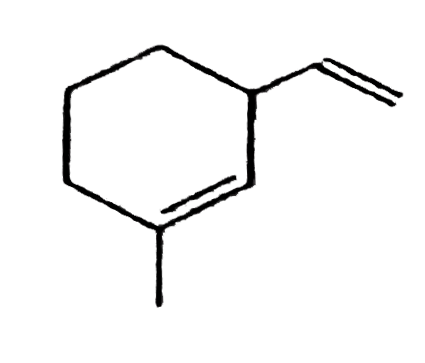A) Addition of HBr on 2-butene gives two isomeric products.
R) Addition of HBr on 2-butene follows Markownikoff's rule.
if both Assertion and Reason are true and reason is the correct explanation of the assertion.
if both assertion and reason are true but reason is not the correct expalanation of the assertion
if assertion is true, reason is false
both assertion and reason are false statements.
The correct Answer is:d
To solve the question, we need to analyze both the assertion (A) and the reason (R) provided:
Step 1: Understand the structure of 2-butene
2-butene has the molecular formula C4H8 and its structure can be represented as:
CH3−CH=CH−CH3
Step 2: Addition of HBr to 2-butene
When HBr is added to 2-butene, the double bond between the carbon atoms breaks, and HBr adds across this double bond. The addition involves the electrophilic attack of H+ from HBr and the nucleophilic attack of Br-.
Step 3: Identify possible products
Due to the symmetrical nature of 2-butene, the addition of HBr can lead to the formation of:
1. 2-bromobutane (where Br attaches to either carbon 2 or carbon 3).
2. However, since both carbons are equivalent in 2-butene, we only get one unique product.
Step 4: Evaluate the assertion (A)
The assertion states that the addition of HBr on 2-butene gives two isomeric products. This is incorrect because, due to the symmetry of 2-butene, only one product (2-bromobutane) is formed.
Step 5: Evaluate the reason (R)
The reason states that the addition of HBr on 2-butene follows Markownikoff's rule. Markownikoff's rule states that in the addition of HX to an alkene, the hydrogen atom (H) will attach to the carbon with the greater number of hydrogen atoms already attached. However, since 2-butene is symmetrical, this rule does not apply in a way that leads to different products. Therefore, this statement is also incorrect.
Conclusion
Both the assertion and the reason are false. Thus, the correct answer is that both statements are incorrect.
Final Answer:
Both the assertion (A) and the reason (R) are false.
---
2-butene has the molecular formula C4H8 and its structure can be represented as:
CH3−CH=CH−CH3
When HBr is added to 2-butene, the double bond between the carbon atoms breaks, and HBr adds across this double bond. The addition involves the electrophilic attack of H+ from HBr and the nucleophilic attack of Br-.
Due to the symmetrical nature of 2-butene, the addition of HBr can lead to the formation of:
1. 2-bromobutane (where Br attaches to either carbon 2 or carbon 3).
2. However, since both carbons are equivalent in 2-butene, we only get one unique product.
The assertion states that the addition of HBr on 2-butene gives two isomeric products. This is incorrect because, due to the symmetry of 2-butene, only one product (2-bromobutane) is formed.
The reason states that the addition of HBr on 2-butene follows Markownikoff's rule. Markownikoff's rule states that in the addition of HX to an alkene, the hydrogen atom (H) will attach to the carbon with the greater number of hydrogen atoms already attached. However, since 2-butene is symmetrical, this rule does not apply in a way that leads to different products. Therefore, this statement is also incorrect.
Both the assertion and the reason are false. Thus, the correct answer is that both statements are incorrect.
Both the assertion (A) and the reason (R) are false.
Similar Questions
Knowledge Check
Addition of Br2 to cis-2-butene would give a product which is:
AachiralBracemicCmesoDoptically activeAddition of Br2 to trans-2-butene would give a product which is
AachiralBracemicCmesoDoptically activeWhich compound is a possible product from addition of Br2 to 1-butene?
A B
B C
C D
D
The addition of Br2 to trans-2-butene produces
View SolutionIn the following questions , a statement of assertion (A) is followed by a statement of reason (R).
A: Addition of Br2/H2O to propene given 1-Bromo propan-2-ol as the major products,
R: Addition of Br2/H2O to an alkene is an example of electrophilic addition
View SolutionWhich can not be the major product formed upon addition of 1
mole of HBr in the following reactions is:
 HBr1mol→ major
HBr1mol→ major
View SolutionStatement-I : Addition of HBr to 1−butene gives two optical isomers.
Because
Statement-II : The product contains one asymmetric carbon.
View Solutionstatement I: Addition of Br2 to 1-butene gives two optical isomers.
statement II: The product contains one asymmetric carbon atoms.
View Solution